Content |
|---|
History
The Pomeranian (Deutscher Spitz;, Pomeranian Lulu or Deutscher Zwergspitz) It is a dog of the Spitz family, named for the region of Pomerania Central, Eastern Germany, and is classified as a dog «Toy» due to its small size.
The ancestors of the Pomerania were Iceland and Lapland sled dogs, He came to Europe because of Pomerania.
The region of Pomerania, bathed in the north by the Baltic Sea and bounded in the west by the island of Rügen and in the east by the Vistula River, It was occupied by many peoples, celts, Slavs, Poles, Swedes, Danish and Prussian. Its name comes from Pomore or Pommern, which means "by the sea", and it was given in times of Charlemagne. Is in Pomerania where the Spitz won fame as a pet and dog work.
Dog breeders improved fur and adapted to the dog to urban life, but the Pomeranian still weighed more than 10 kg to arrive in England.
The reduction of size of the animal and the development of its variety of colors is attributed to breeders, following trial and error methods and applying the genetic theories of Gregor Mendel. The current Pomeranian is small due to selective breeding, but retains the robustness and coat typical of cold-climate dogs.
It was Queen Charlotte of England who introduced the Pomeranian among the nobility of her country, but the Pomeranian only achieved international fame when her granddaughter Victoria returned from a vacation in Florence, Italy with a Pomeranian named Marco.
It should be noted that, the Pomeranian as a modern race did not exist until the 19th century. The dogs of the Queens Charlotte and Victoria were much larger, probably a German Spitz and a Spitz Volpino. The same can be said of other historical owners of pre-19th century Pomeranian dogs.
However this nomination can be discussed already in a painting of the 15th century by the author Jan Van Eyck, titled "The Arnolfini Marriage" there is a dog with the same characteristics of the Pomeranian. The closest relatives of the Pomeranian are the Gray Norwegian Elkhound, the Samoyed, the Schipperke and the family of the Spitz.
According to official documents, in the sinking of the Titanic, on the morning of the 15 in April of 1912, only 3 dogs were able to be rescued, being two of them race Pomerania. It is known that one of them was called "Lady.", and was owned by Margaret Hays, who also saved his life.
Photo: An orange-ivory “Pomeranian” named Coco by Rob Hanson, CC BY 2.0, via Wikimedia Commons
Physical characteristics
according to one of the rules, the Pomeranian must be balanced; in other words, all parts of your body must be proportionate. You must also have a warning reflex expression of his temperament, that tends to make them very indicated as guard dogs.
Its head is triangular in shape, What gives true zorruno aspect. The ears are small and raised. The tail, breed characteristic, You must bend on back and behave high and horizontal.
With a weight of 1.4 to 3.2 kg and a height to the cross of 18 to 22 cm., per AKC standards, the Pomeranian is the smaller Nordic race.
The coat of the Pomeranian has two layers, the internal, dense and smooth, and the foreign, long, LaCie and more rough. Males move the bottom once a year; intact females do during heat, After giving birth, and in times of anxiety.
The Pomeranian are generally a healthy breed, resistant and long, they live between 12 and 16 years. Its main problem is the dislocation of patella. Legg-Calvé-Perthes syndrome and hip dysplasia can also occur, Although they are less frequent in this small breed.
They are also prone to suffer dry keratoconjunctivitis, unrest in the lacrimal ducts and falls, It can appear in young adults and lead to blindness.
Are common skin diseases, especially allergies (that usually produce moist eczema or acute moist dermatitis) and follicular dysplasia. Other problems include hypothyroidism, epilepsy and hypoglycemia. Occasionally, Hydrocephalus can occur in puppies.
The Pomeranian, like most “Toy” breeds, they are prone to dental problems, It is recommended to brush their teeth every week and, If it is possible, daily.
The care of the hair of the Pomeranian is similar to the Peking. It is essential to brush them daily or at least twice per week to the thick fur is not enmarañe, seasonal moulting. Recommended care newspaper of ears and nails, as well as seasonal baths. However, is better to not bathe them too, the loss of essential oils can damage skin and fur.
Character and skills
The Pomeranian adapts easily to the urban life and they are excellent for the field, where wakes up the deep Hunter instinct of their wild ancestors.
The Pomeranian is very active, Intelligent, courageous and loyal. However, may not interact well with young children, and because of their small size may suffer child abuse. It must be borne in mind that it is a spiteful dog, and strong-willed, like all Spitz, so it will not tolerate the mistreatment by the small, and will bite. If you reach this situation, the animal will remember him always, and displays elusive, and uncomfortable in the presence of children.
The Pomeranian can be trained as guard dog are able to announce the arrival of intruders with barking sound and sharp.
Unfortunately, the lack of a thorough training has given them a reputation of ladradores constants and without reason.
The Pomeranian dog is a dog of independent, and sometimes gives the impression of being a solitary animal.
They don't like it - especially- physical contact, although they do appreciate the caresses, and that they rasquen them back and ears, where are more sensitive.
Due to its small size, and its appearance of Teddy, people have the tendency to pick up the dog in her arms, which the animal disliked. That is why before reach out to touch any dog alien, It's always good to ask for approval to his master.
They are extremely faithful, and they like to spend long time lying at the foot of their masters. Feel preference by a person of the family, Although faithful will be displayed, and docile with all the people of the nucleus. It is not uncommon that display suspicious, and aggressive in the presence of strangers.
The Pomeranian is a dog jealous, capricious, and territorial, and because of its small size, owners tend to pamper them, and consent to them. If you want to introduce another dog, along with the Pomeranian, it is better to do it when the animal is still a puppy, because otherwise it will not tolerate the presence of other animals.
Due to its thick cloak of hair, double layer, It is not uncommon to find the Pomeranian dog resting on hard surfaces, and fresh.
We need special caution in summer, as they tend to look for cool and shady corners to lie down, and there is a risk of stepping on it.
Characteristics "Pomeranian"
Coexistence is important that you have with your new friend. Before considering the acquisition of a dog of the breed "Pomeranian" you know certain factors. Not all breeds of dogs are apt to live in an apartment, you must take into account his character, their need for exercise, their interaction with other pets, their care and if you have small children, their level of tolerance towards them.
Adaptation ⓘ4,0 of 5 stars (based on 1 review)
|
friendly dog ⓘ4,0 of 5 stars (based on 1 review)
|
hair loss ⓘ4,0 of 5 stars (based on 1 review)
|
|---|---|---|
Affection level ⓘ5,0 of 5 stars (based on 1 review)
|
Need for exercise ⓘ3,0 of 5 stars (based on 1 review)
|
Social need ⓘ4,0 of 5 stars (based on 1 review)
|
Home ⓘ4,0 of 5 stars (based on 1 review)
|
Toilet ⓘ4,0 of 5 stars (based on 1 review)
|
Friendly with strangers ⓘ4,0 of 5 stars (based on 1 review)
|
barking ⓘ4,0 of 5 stars (based on 1 review)
|
Health ⓘ3,0 of 5 stars (based on 1 review)
|
Territorial ⓘ3,0 of 5 stars (based on 1 review)
|
Cat friendly ⓘ4,0 of 5 stars (based on 1 review)
|
Intelligence ⓘ4,0 of 5 stars (based on 1 review)
|
Versatility ⓘ3,0 of 5 stars (based on 1 review)
|
Child friendly ⓘ4,0 of 5 stars (based on 1 review)
|
Surveillance ⓘ3,0 of 5 stars (based on 1 review)
|
joy ⓘ4,0 of 5 stars (based on 1 review)
|
Pomeranian images
Pomeranian Videos
Type and recognitions:
- FCI CLASSIFICATION: 97
- Group 5: Spitz and primitive types
- Section 4: European Spitz. Without working trial..
Federations:
- – FCI – Group 5 – Section 4 European Spitz. ⓘ
- – AKC – Toy ⓘ
- – ANKC – Toy ⓘ
- – CKC – Toy ⓘ
- – KC – Toy ⓘ
- – NZKC – Toy ⓘ
- – UKC – Lapdog ⓘ
FCI breed standard "Pomeranian"
Use:
Guard and companion dog.
General appearance:
TheSpitzThey attract attention for their beautiful separated fur with the presence of a very dense undercoat.. The neck surrounded by an abundant mane and the tail covered with long hair is striking., turned up and spread boldly on the back. The head is similar to that of the fox with diligent eyes and small pointed ears. The ears, placed very close to each other, confer toSpitzhis characteristic relaxed appearance.
important proportions
Proportion of 1:1 between the height at the withers and the length of the dog.
TheGerman Spitz is constantly attentive, is active and exceptionally dependent on his master. Learn quickly and can be trained easily. His distrust of strangers and his lack of interest in hunting allow him to be considered the ideal watchman for the house and farm.. Its most notable characteristics are its resistance to weathering., its robustness and longevity.
Head:
---- Skull: The skull ofSpitzis medium-sized; viewed from above seems to swell back becoming more narrow wedge shaped to the tip of the nose.
- Depression links (Stop): Little steep until marked, but never abrupt.
facial region:
- Truffle: Round, small, black; in all theSpitzbrown in color is dark brown in color.
- Snout: Not very long, Neither coarse nor pointed; It presents a good proportion in relation to the skull (in the Spitz type Keeshond/Wolf, in the large Spitz and medium Spitz the ratio snout/skull is approximately 2/3, in the small Spitz and in theSpitz enano/Pomerania is approximately 2/4).
- Lips: They are not hanging; they are well bonded and do not form folds in the corners. They are black in all colours, in theSpitzbrown in color are brown in color.
- Jaws/Teeth: The jaws are normally developed and show a complete scissors bite with 42 teeth, That is, the upper incisors fall closely in front of the lower incisors., teeth being implanted perpendicular to the jaws. InSmall and dwarf spitz/Pomeranian the loss of a few promolars is tolerable. A pincer bite is allowed in all varieties ofSpitz.
- Cheeks: The cheeks are slightly round and are not prominent.
- Eyes: The eyes are medium-sized, elongated, a little oblique, dark colored. The eyelids have black pigmentation in all color varieties and are only dark brown in theSpitzof brown variety.
- Ears: The pointed ears in the shape of a pointed triangle are small and rather closely placed together.. Its inclusion is high. They always remain erect with a rigid tip.
Neck:
The neck is moderately long and presents a broad inclusion with shoulders; the neck is slightly convex, without dewlap and covered with a mane shaped collar.Body:
- top line: The top line begins at the tip of the erect ears and passes in a gentle arc over the short, straight back.. The deployed and with abundant fur tail partially covers the back and rounded silhouette.
- Cross/Back: The high cross falls imperceptibly on the short back, straight and strong.
- Pork loin: Short, wide and strong.
- Rump: The rump is short and wide, unexpired.
- Breast : Deep chest, well arched; the apron is well developed.
- Bottom line and belly: The chest is expanded as much as possible back; the abdomen is moderately retracted.
Tail:
The tail has a high insertion and a medium length; bends upward from the root and rolls over the back, spreading firmly. Well covered with thick hair. A double loop in the tip of the tail is acceptable.Tips
Former members
- As a whole: Straight, large on the front.
- Shoulder: The scapula is long, placed backwards at an angle. The arm, showing almost the same length, with the scapula forms an angle of approximately 90 degrees. Shoulders with good musculature are closely linked with the chest.
- Arm: Medium length, robust and fully straight on the trunk, covered with long hair in the form of pen in the posterior region.
- Elbows: The elbow joint is strong, close to the chest without bending inward or outward.
- Metacarpus: The Metacarpus strong and medium length, forms an angle of approximately 20° in relation to the perpendicular line.
- Front feet: The front feet are as small as possible, round, compact, as cat with well arched toes feet. Pads and nails are black in all varieties of Spitz, and they are only dark brown on brown dogs.
Later members
- As a whole: The hindquarters are very muscular, covered with very long hair up to the Hock joint. The hind limbs are straight and parallel to each other..
- Thigh and leg: They have approximately the same length.
- Knee: The knee joint is strong, slightly angled and, during the movement, It does not twist outward or inward.
- Metatarsus: Medium length, very strong, maintains a position perpendicular to the ground.
- Rear feet: The hind feet are as small as possible, round, with toes well arched and together, as cat feet. Pads are hard. The color of nails, pads is much darker.
Movement:
TheSpitzmoves with enough coordination, with a good push and almost floating in light trot.Mantle
Skin
The skin should be well attached to the body, without kinking.
Fur
TheSpitzThey have a double coat covered with hair: the outer layer is long-haired, straight and separate and the inner layer is short-haired, dense and woolly. The head, ears, anterior surface of the forelimbs and hindlimbs and feet are covered by short, dense hair (velvety). The rest of the body is long and abundant hair. The hair should not be wavy, chino, or form hair, You must not present a stripe on the back. A thick mane covers the neck and shoulders. The rear face of the forelimbs has hair in the form of feathers. The hindquarters should be covered with long hair from the rump to the Hock joint. The queue must be covered with hair is long and abundant.
Color
- Wolf Spitz/Keeshond: Grayish.
- Grossespitz (Giant or Large Spitz) : Negro, brown, white.
- Mittelspitz (Standard or Medium Spitz): Negro, brown, white, orange, grey, other colors.
- Kleinspitz (Miniature or Small Spitz): Negro, brown, White Orange, grey, other colors.
- Spitz enano/Pomerania: Negro, brown, white, orange, grey, other colors.
- Black Spitz: The fur of the black Spitz should be dark in the skin as well as internal NAP and the color of the outer layer should be jet black color without any white spot.
- Brown Spitz: The Brown Spitz should have a uniform dark brown color.
- White Spitz: The hair should be pure white, no yellowish tones that can often occur in the ears.
- Spitz anaranjando: The Orange Spitz should have a single uniform colour in the average range of the RAL (Registration International of the color scale).
- Greyish Spitz/Keeshond: Gray is understood as grey silver with black hair tips. Snout and ears are dark. Around the eyes there is a drawing in the shape of glasses consisting of a delicate black line. (It extends from the outer corner of the eye to the lower part of the inclusion of the ear) or in broken lines and shading that draw short eyebrows, but expressive. Mane and ring shoulders are a tone clear. The anterior and posterior members are grey silver unmarked black below the elbows and knees, except delicate stripes on your fingers (pencilling). The tip of the tail is black. The lower part of the tail and the buttocks are grey Silver clear.
- Spitz other colours: Under this description all tones are included as: cream-coloured, cream-saber, anaranjado-Sable, black with tan and stained. The spotted must have a white background color. Black stains, brown, gray or orange should be distributed throughout the body.
Size and weight:
Height to the cross
- Wolf Spitz/Keeshond: 49 cm ± 6 cm..
- Grossespitz (Giant or Large Spitz) : 46 cm ± 4 cm..
- Mittelspitz (Standard or Medium Spitz): 34 cm ± 4 cm..
- Kleinspitz (Miniature or Small Spitz): 26 cm ± 3 cm..
- Spitz enano/Pomerania: 20 cm ± 2 cm. (are undesirable specimens measuring less than 18 cm.).
Weight
Any variation in the size of theGerman Spitz must have a corresponding variation in its weight.
Fouls:
Any deviation from the above criteria is considered missing and the seriousness is considered to the extent of the deviation to the standard.
Serious misconduct
- Defects in the Constitution.
- Head too flat or sharp Apple-shaped.
- Truffle, eyelids and lips of flesh-colored.
- Defects in the premolars in Wolf Spitz/Keeshond, Medium and large Spitz.
- Eyes too big or clear or very outgoing.
- Defects in the movement.
- Absence of classic drawing of the face inSpitzgrey.
ELIMINATING fAULTS
- Aggressive or fearful dog.
- Open fontanel.
- Upper or lower prognathism.
- Entropion or ectropion.
- Floppy ears.
- White spots visible on allSpitznon white.
Any dog showing clear signs of physical or behavioral abnormalities should be disqualified..
Males should have two normal-appearing testicles fully descended into the scrotum..
Source: F.C.I - International Cynological FederationAlternative names:
1. Pom-Dog, Pom-Pom, Pom, Zwers, Tumbleweed (English).
2. Spitz nain, loulou de Poméranie (French).
3. Zwergspitz (German).
4. Spitz Alemão Anão, Lulu da Pomerânia, Zwergspitz (Portuguese).
5. Spitz enano alemán, pomeranio, pomerano, Lulú de Pomerania, pome (español).
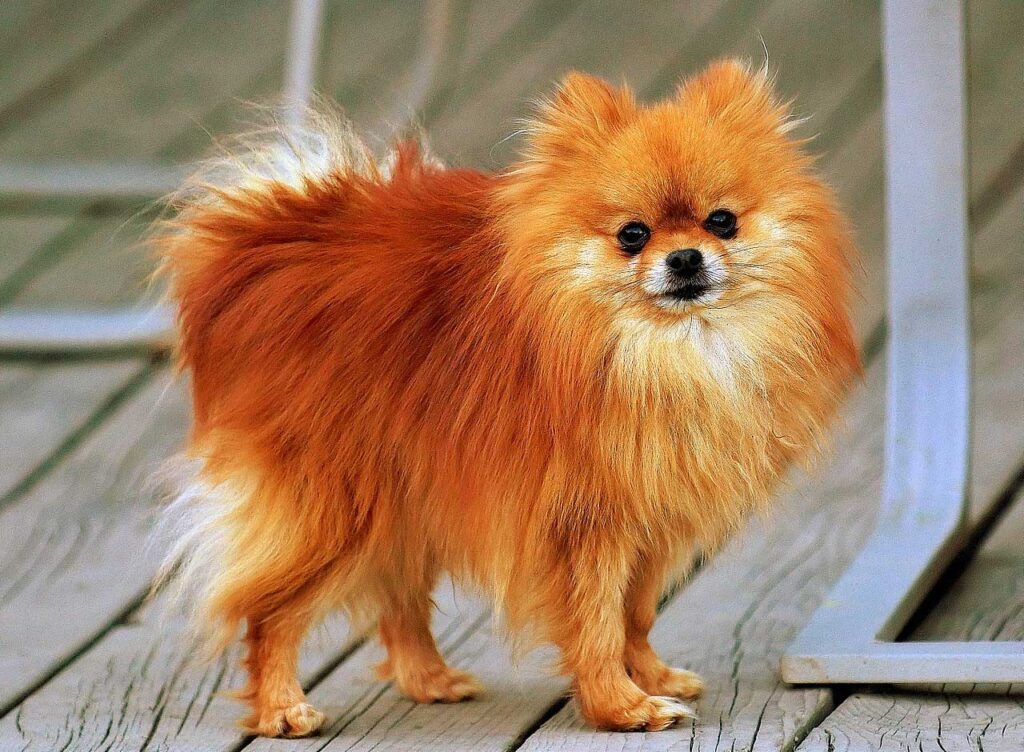
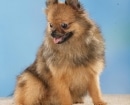
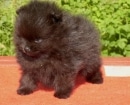
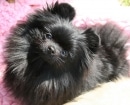
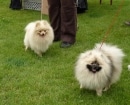
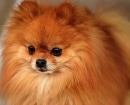
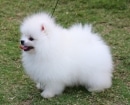
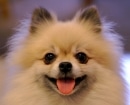

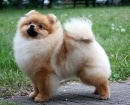
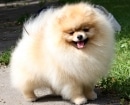
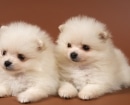
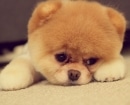
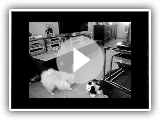 Very playful Pomeranian Lulu
Very playful Pomeranian Lulu Aventuras de thor y loki (Pomeranian)
Aventuras de thor y loki (Pomeranian)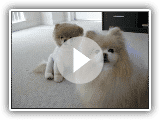 #2 Boo The Cutest Pomeranian – Soul Seekin Woman
#2 Boo The Cutest Pomeranian – Soul Seekin Woman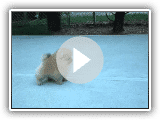 AKC Pomeranian Puppy – Benjamin at 8 weeks old
AKC Pomeranian Puppy – Benjamin at 8 weeks old
One more remark about buying a Pomeranian: In addition to the "usual" items, which must be considered before buying a dog, you should only buy a Pomeranian from a breeder. Pomeranians are one of the domestic breeds that are particularly endangered due to heredity. Hence the right one selection even more important than other races. Many breeders also offer their dogs on online platforms such as e.g. https://trovas.ch/?title=pomeranian an. As an animal rights activist, I recommend it, that you always pick up the dogs personally. Be careful when buying cheap dogs, which are handed over at a rest area or other dubious environment. These are usually dog dealers with mostly sick Pomeranians!
This is a KLEINSPITZ not a Pomeranian..
The Pome is even smaller.
Hello I am interested in your page I want to buy a toy that e pomerania seen by internet and is like a Teddy but fail to find that dog, was if I you could help comparalo a greeting.